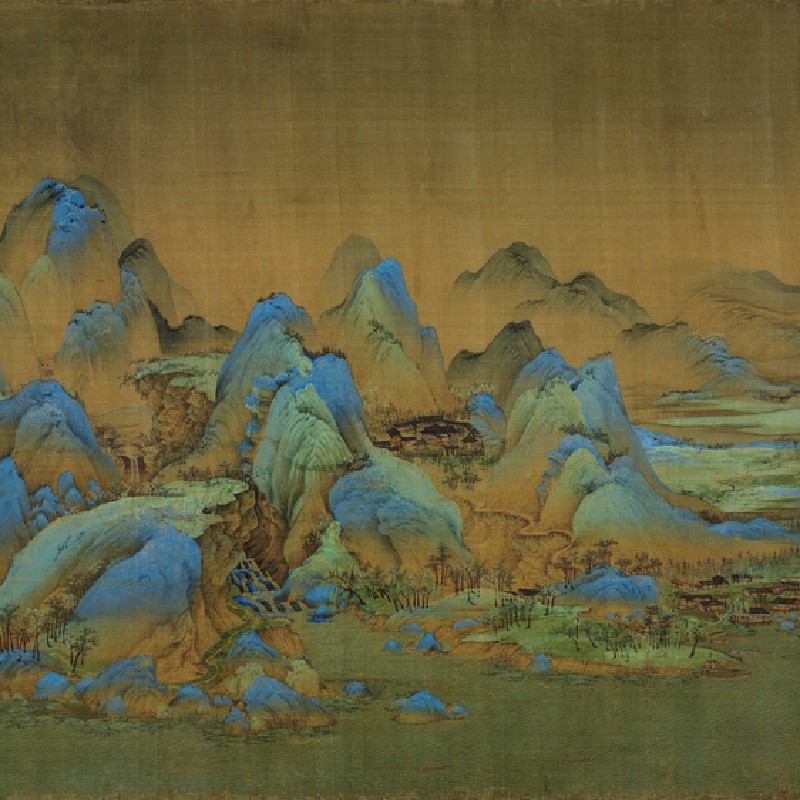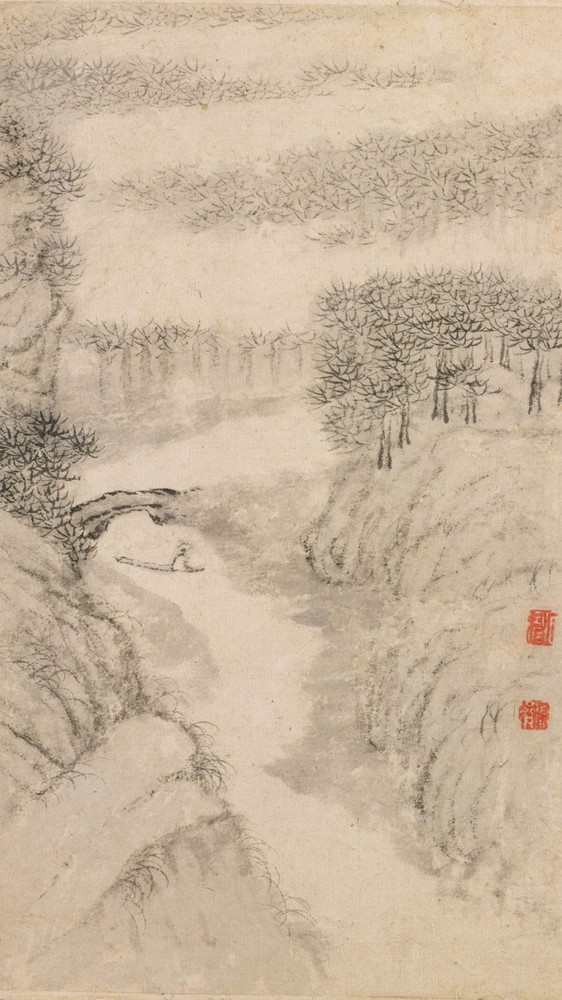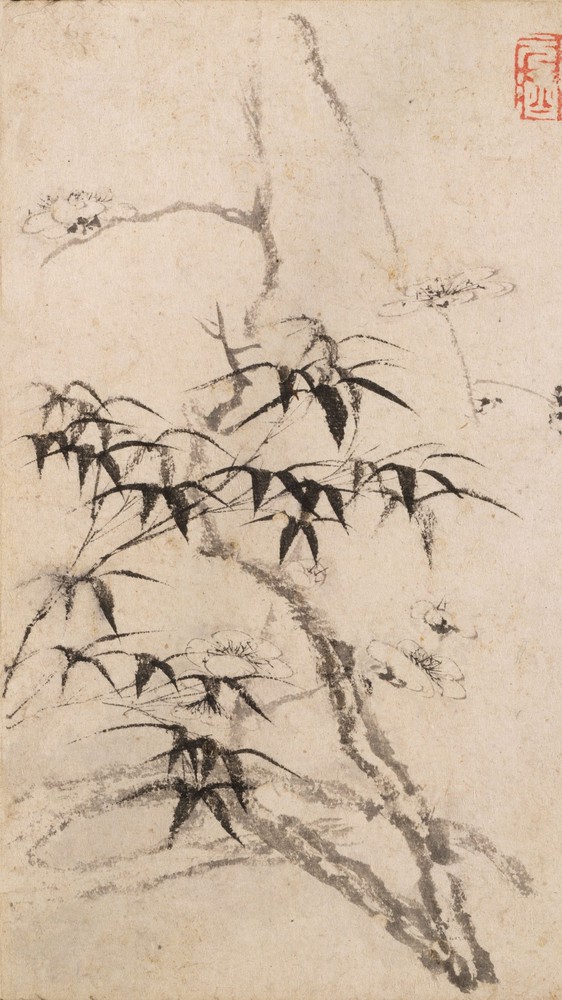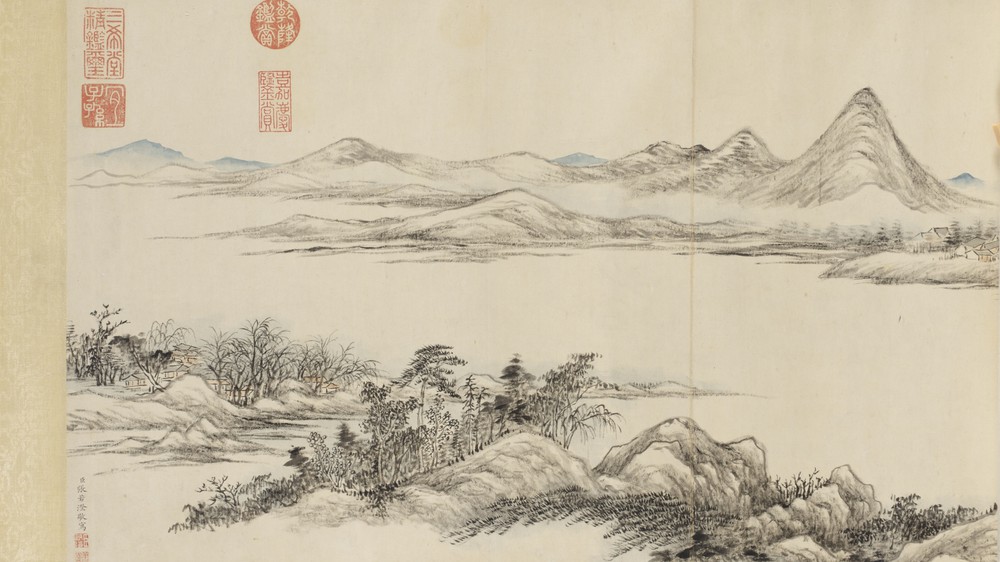Chinese Scrolls
Chinese scrolls come in two predominant varieties: hanging scrolls, and handscrolls.
The hanging scroll is an early tradition dating back to the development of silk during the Han Dynasty from 206 B.C.E. to 220 C.E. Generally, a hanging scroll displays a painting or calligraphy on silk or paper and is rolled up most of the time, expanded and hung only during special events and ceremonies. The materials are delicate and would fade if the scrolls were on constant display, making their moments of exhibition all the more special. In contrast to western paintings, which are viewed from a bit of a distance, hanging scrolls’ minute details are examined close up and read like a narrative. Some scrolls only display poetry and verses, some have images alone, and others are comprised of both image and poetry.
Similarly, the handscroll—a continuous roll of silk or paper—is designed to be viewed only on occasion. Handscrolls are stored with extreme care—held within an indivdual wooden box, and often wrapped in silk with a tie fastened with jade or ivory. The showing of a handscroll is predominantly limited to one or two people, allowing for an intimate, ceremonial experience that encourages the viewer to explore the painting in detail, up close and in their own time. The format of the handscroll lends itself particularly to storytelling—for example, a journey that takes place over time, as in the case of Searching For My Parents, or a moment in time made up of multiple scenes, as in the case of Along the River During the Qingming Festival.
Editorial (4)

A Work of Three Perfections
You know that feeling when a snippet of music stops you in your tracks for the memory or emotion it elicits? Or how a smell…

A Motion Picture Before the Time of Film
What is a film but a series of images? Although films wouldn’t appear until the late 19th century, they were approximated ne…

This Qing Dynasty Masterpiece is a Blockbuster Waiting to Happen
In this series, the curatorial team presents one work from the Meural art library we find essential.
Artists (6)

Liu Yu
Chinese, 17th century–17th century
Wang Ximeng
Chinese, 1096–1119
Wei Zhike
Chinese, 16th century–mid-16th centuryPlaylists (7)



Shitao: Returning Home


